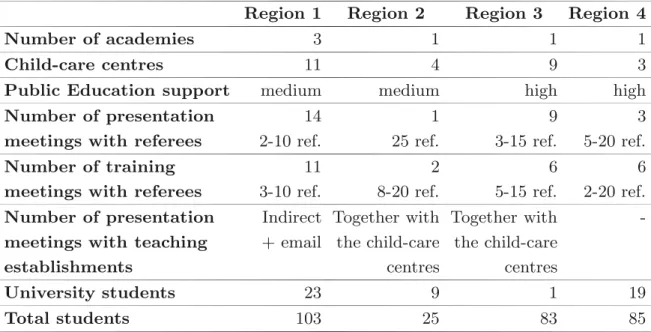EyeSchool: an educational assistive technology for people with disabilities - Passing from single actors to multiple-actor environment
Texte intégral
Figure

Documents relatifs
The resolution calls upon Member States to promote the rights and dignity of people with disabilities; support community-based rehabilitation; and include a disability component
The United Nations Convention on the Rights of the Child (UNCRC) and on the Rights of Persons with Disabilities (UNCRPD) contribute to the international legislative framework for
Children who cannot live with their families of origin need adoptive or foster families or carers who can provide the essential family qualities of acceptance, warmth,
People with mental and multiple disabilities as well as seniors with visual disabilities have difficulties of adaptation to new technologies when searching information for their
In the experiments described below Gaussian Mixture Models (GMM) have been used trained with different acoustical parameters: Mel Frequency Cepstral Coefficients (MFCCs), Zero
These learning strategies are used to design reusable units of learning where adaptive learning flows are implemented. IMS-LD provides the necessary support to design strategies
This paper presents specialised Machine Learning algorithms that attempt to clas- sify the behavioural states and communication attempts of people with PIMD based on annotations
One approach which seemed promising was to make use of automatic measurements, both for measuring study outcomes as well as for triggering the interaction patterns, for